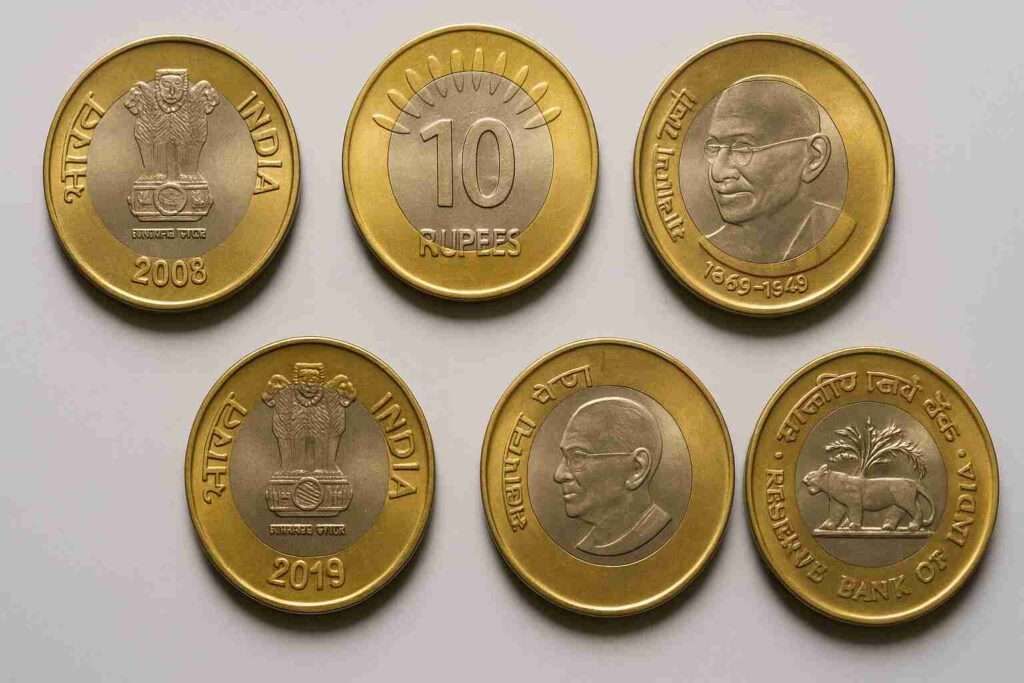6:30 IST – Unlike most awareness campaigns that come and go, the Reserve Bank of India has been consistently running Google ads all over the internet, even in November and December 2025, social posts and offline nudges telling people: “All ₹10 coins are valid.”

Unlike typical currency updates, where only bankers need to know the rules, this is one rare case where the RBI is literally chasing common citizens across the internet.
Unlike design-confusion stories from the past, this issue refuses to die — and the RBI clearly knows it. So the obvious question for many: Why is the RBI still pushing ads for something as basic as a ₹10 coin? However, this is an RBI awareness program for everyone.
Here’s the full story.
The Problem Is not New — The Misunderstanding Is Still Alive
Across India, small merchants, auto drivers, vegetable sellers, and even some shopkeepers continue to reject certain ₹10 coins “because they look fake”. As per RBI data, there is a total of 14 official designs of the ₹10 coin issued over the years.
A March 2025 clarification again stated that all ₹10 coins — every design, every year — are legal tender, and refusal is technically a violation of currency rules.
The truth is simple: people still don’t trust the coin.
And that is exactly why the RBI has switched from press releases to Google ads, social media videos, and mass-reach awareness drives.
Why People Still Reject ₹10 Coins (2025 Reality)
Here’s a clear breakdown of the reasons:
| Issue | What’s Actually Happening (2025) |
|---|---|
| Multiple Designs | There are around 14 designs. People assume unfamiliar designs = fake. |
| Rumours & WhatsApp forwards | Fake messages claiming “X design is invalid” OR most people accept only 1 design, keep resurfacing every few months. |
| Regional clusters of refusal | Andhra Pradesh, Telangana, Rajasthan rural, parts of Karnataka and Uttar Pradesh still see merchants rejecting coins. |
| Low trust in metal coins | Digital payments created a mindset that cash coins = outdated = suspicious. |
| Lack of visual consistency | Newer designs look sharper; older ones look worn. People confuse wear-and-tear with counterfeiting. |
This is why, even today, RBI officers say awareness isn’t “once-and-done”. It must be repeated until the confusion dies.
So, Why Google Ads? Why Now?
Because traditional communication wasn’t enough. Posters in bank branches don’t reach auto-drivers. Press releases don’t reach fruit vendors. And WhatsApp rumours spread faster than any newspaper clarification.
Google ads offer three advantages that the RBI clearly wants:
- Mass reach — You and I see them, but so do millions of small merchants.
- Repetition — The message keeps appearing until it sticks.
- Targeting — RBI can reach specific states where coin refusal remains high.
This is not “overdoing it”. This is damage control, because the refusal problem is smaller than before, but still widespread enough to disrupt everyday transactions.
Why This Matters to You
For consumers, the rule is clear: Every ₹10 coin — any design — is valid. No shopkeeper can force you to exchange it.
For merchants:
Rejecting a legal-tender coin can invite RBI scrutiny and disrupt customer flow.
For the ecosystem:
A currency is only as strong as the trust behind it. If a ₹10 coin fails that test, friction enters the system — and that friction costs the economy time and money.
What to Do If Someone Rejects Your ₹10 Coin
- Stay calm and tell them politely that RBI has confirmed all ₹10 coins are valid — every design, every year.
- Show confidence. Just saying “RBI 100% approved coin” solves the problem 90% of the time.
- If they still refuse, ask for the owner/manager. Most staff reject coins out of fear, not facts.
- At banks – Banks cannot legally refuse coins, so go straight to the branch manager or deposit all coins.
- Want to take it further? File a quick complaint on the RBI Sachet portal — it actually works.
RBI Awareness Archive – Most People in J&K Don’t Know This: Over ₹465 Crore of Public Money Is Just Sitting Idle in Banks — Could Any of It Be Yours?







